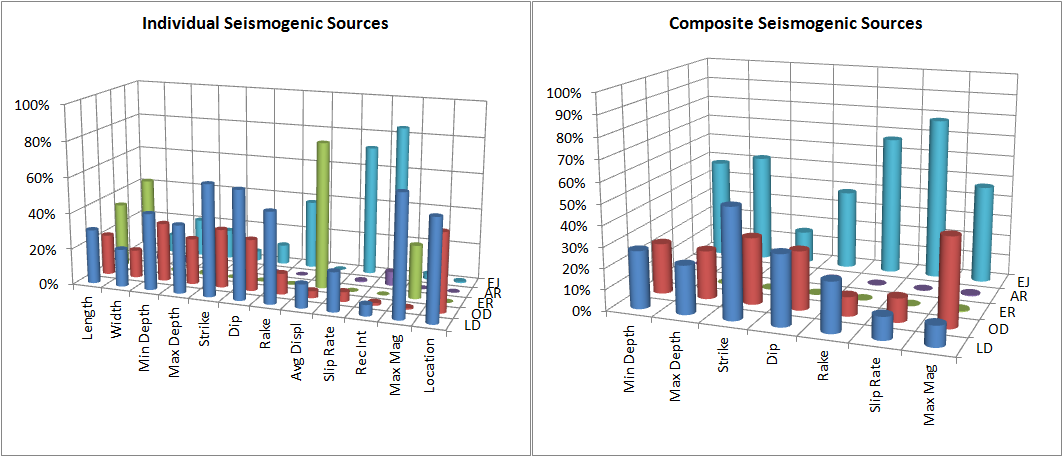Data Qualification
In DISS, at each parameter of a seismogenic source, a qualifier is added to communicate to users the source of information used to estimate the parameter's value. To this end, we use five qualifiers:
LD is used for information published in the scientific literature and has already gone through peer-review. Conversely, OD is used for scientific data collected by compilers or contributors that was not, or has not yet, been published in a scientific journal. This circumstance may occur in many instances because a single fault parameter, e.g., the fault length, cannot become a subject worthy of publication by itself. Still, such information may be crucial to be added in the identification of a seismogenic source. ER applies in all those cases where the information cannot be directly measured but can be inferred from existing empirical relations. This circumstance is most often the case for earthquake magnitude. AR applies to simple cases, such as the width of a fault derived from its depth interval and dip angle. EJ applies in all other cases and often refers to estimates given by compilers and contributors to a parameter based on general considerations from regional data.
- LD for Literature Data;
- OD for Original Data;
- ER for Empirical Relationship;
- AR for Analytical Relationship;
- EJ for Expert Judgment.
LD is used for information published in the scientific literature and has already gone through peer-review. Conversely, OD is used for scientific data collected by compilers or contributors that was not, or has not yet, been published in a scientific journal. This circumstance may occur in many instances because a single fault parameter, e.g., the fault length, cannot become a subject worthy of publication by itself. Still, such information may be crucial to be added in the identification of a seismogenic source. ER applies in all those cases where the information cannot be directly measured but can be inferred from existing empirical relations. This circumstance is most often the case for earthquake magnitude. AR applies to simple cases, such as the width of a fault derived from its depth interval and dip angle. EJ applies in all other cases and often refers to estimates given by compilers and contributors to a parameter based on general considerations from regional data.






